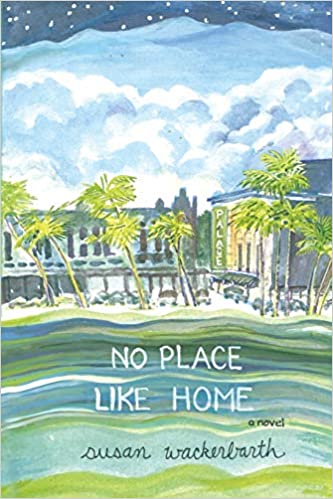
Before we bid farewell to summer, there’s still time to enjoy a final three fictional escapes. Each story is attached to a place, and one or more points in history. Each involves at least one feisty heroine who takes control of her own life, however reluctantly.

I almost didn’t pick up The Lions of Fifth Avenue. For some reason I thought it was about financial titans or young lawyers. But I was wrong. The sculptured lions in Fiona Davis’ intriguingly mysterious historical novel, lie on either side of the main Fifth Avenue entrance to the New York Public Library.
Before diving into the book, lets pause for a couple historical notes. The lions themselves were designed by Edward Clark Potter in 1911, and were carved from Tennessee Pink marble. Facing the entrance today, the lion on the left, south side is Patience, and the one on the right, north side is Fortitude.

It wasn’t always so. They were first called Leo Astor and Leo Lenox after two of the library’s founders. At some point, people began calling the lions Lady Astor and Lord Lenox. During the Great Depression of the 1930s, Mayor Fiorello LaGuardia dubbed the feline guardians Patience and Fortitude, two attributes New Yorkers needed to get through hard times.

At its dedication in 1911, The New York Public Library was a marvel of its time. It featured a huge reading room sitting above seven floors of book stacks housing 75 miles of shelving and over one million books. Transmission of the books to the reading room was via the most rapid delivery system in the world.

Fiona Davis’ meticulous research reveals many more aspects of the massive library as it was in both 1914 and 1993. In developing her characters, Davis humanizes the early days of the women’s rights movement. In 1914 women didn’t have the right to vote, but they could test social norms and their own assumptions. Laura Lyons, the initially conventional main character, has a husband, a son, and a daughter. She would also like a life for herself. In her pursuit of a journalism career, Laura ventures away from Fifth Avenue to Greenwich Village, and away from meeting other people’s expectations to finding her own.
This is a time-slip novel with the parallel story of Sadie Donovan, a curator at the library who happens to be Laura’s granddaughter. Sadie isn’t a woman who wants to break barriers, but she stands up for herself. The year, by the way, is 1993 which is now sufficiently long ago to qualify as a period of historical fiction. [Ouch!]
An overarching thread is a mystery of disappearing books. Thefts in 1914 become tied to missing books in 1993. I thought the solution to the mystery was satisfyingly unexpected, though better sleuths than I may devise the answer sooner.
An absorbing read as well as a Good Morning America Book Club Pick

Honeysuckle Season by Mary Ellen Taylor is another piece of historical fiction. Set in Bluestone, Virginia in the Blue Ridge Mountains, this family saga opens with Libby McKenzie who is trying to sort out her father’s estate and her own life, while establishing herself as a wedding photographer. Elaine Grant, owner of nearby Woodmont Estate, invites Libby to cover a wedding on the premises.
Not surprisingly, Woodmont Estate is filled with unspoken secrets resembling the honeysuckle vines that grew up around the abandoned greenhouse. As the vines are removed so the greenhouse can be restored, stories emerge.
One is about Olivia Carter who fled the London Blitz to marry the doctor who then owned the estate. Another is about Sadie, whose family was known for their distinctive honey flavored moonshine.
Time alternates between 1994 and the 1940s. When all is done, Libby is a better place than she started.
A good read on a lazy, humid day.

No Place Like Home, wherever that may be, takes the reader to Hilo, Hawai`i, my home town, with a focus on haole residents, both, as the author writes, home grown & flown, who for various reasons, live in East Hawai`i. Among them, Griff lives over a lava flow in Puna; teen-age Mahina hangs out in pricey Sunrise Ridge with her mother Iris. George has a house further up the mountain that he shares with his partner Cal. Desiree and her children perch in a hot, tiny apartment in downtown Hilo. Additional characters wander through the pages to fill out the cast for the Palace Theater’s fall musical production The Wizard of Oz.
By the time the musical opens, drug deals have gone down, romance has blossomed as well as died, good luck has triumphed over evil, and most of the characters have identified the next steps in their lives.

The Palace Theater was built in 1925 and is on the National Register of Historic Places. At the time it was built, the Palace was the grandest theater outside of Honolulu. It was constructed with redwood timber imported from the Pacific Northwest. The roof, sides, and back where sheathed in sheet metal, a standard tropical construction method. The front facade is in the Beaux-Arts style executed in stucco with wood moulding.
In 1930 Consolidated Amusements bought the theater and ran it until the company closed it in 1984. During the 1990s, restoration work began. The Friends of the Palace Theater formed in 2000 to continue renovating and modernizing the building. The fall musical is an important part of the fundraising process, which brings us back to No Place Like Home.
Debut author Susan Wackerbarth knows the Palace Theater from both the front and back of the house. Her deft characterizations of the theater and the people who love it are based in reality. No Place Like Home is a a fun read.
📖📖📖
Illustrations
Ribeira das Naus, Lisbon Portugal by Pedro Ribeiro Simoes.
New York Public Library Post Card 1920.
Lion statues outside main branch by Ken Thomas. Released to public domain.
Palace Theater, Hilo HI by Reweaver33
Palace Theater, Hilo HI
New York Public Library History

Sandra Wagner-Wright holds the doctoral degree in history and taught women’s and global history at the University of Hawai`i. Sandra travels for her research, most recently to Salem, Massachusetts, the setting of her new Salem Stories series. She also enjoys traveling for new experiences. Recent trips include Antarctica and a river cruise on the Rhine from Amsterdam to Basel.
Sandra particularly likes writing about strong women who make a difference. She lives in Hilo, Hawai`i with her family and writes a blog relating to history, travel, and the idiosyncrasies of life.

